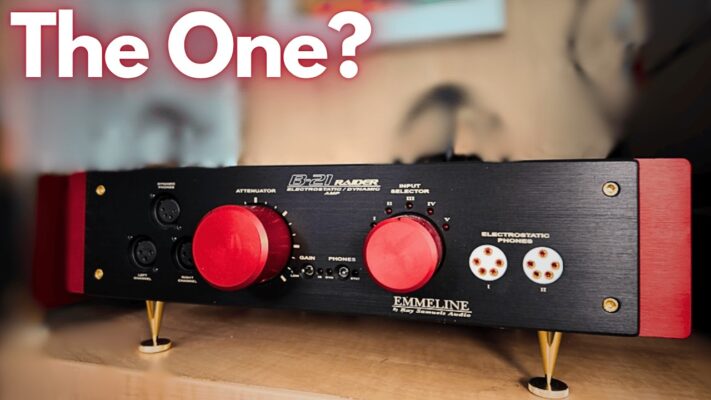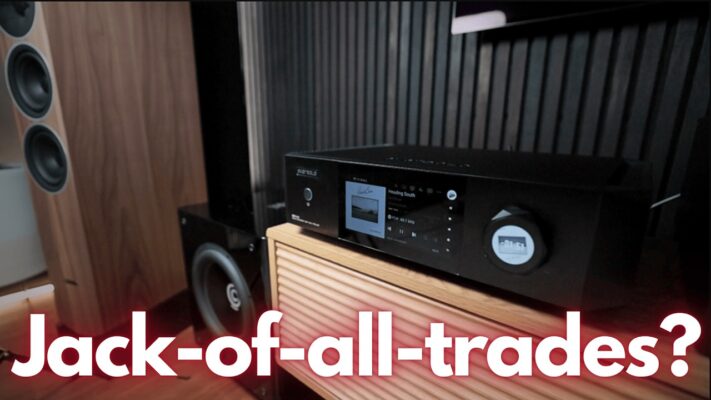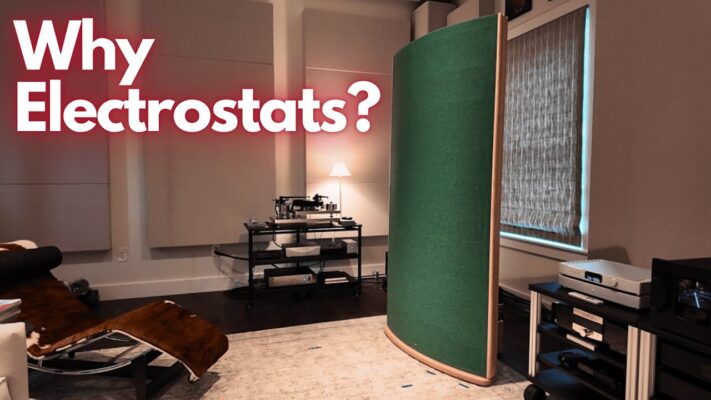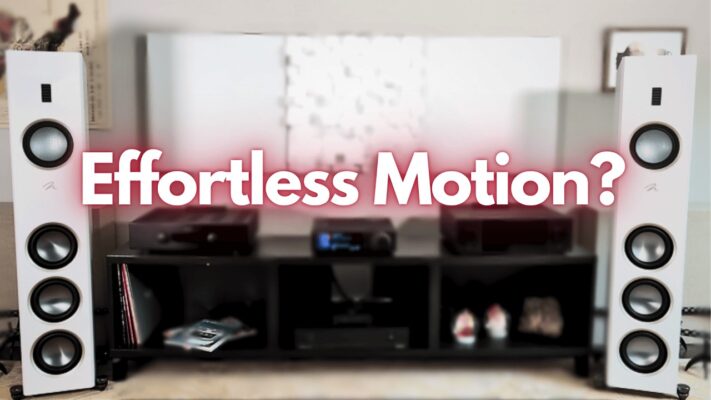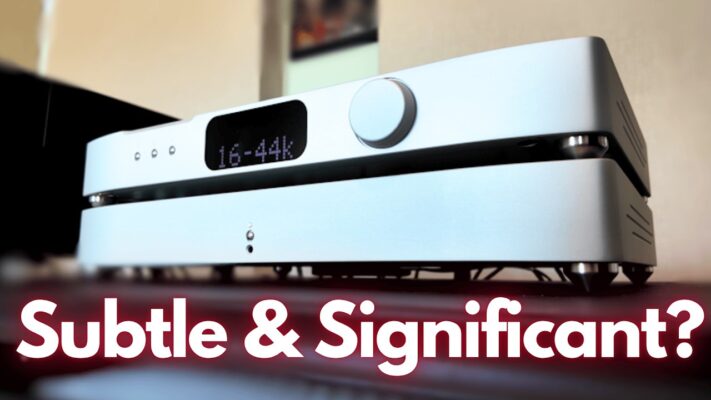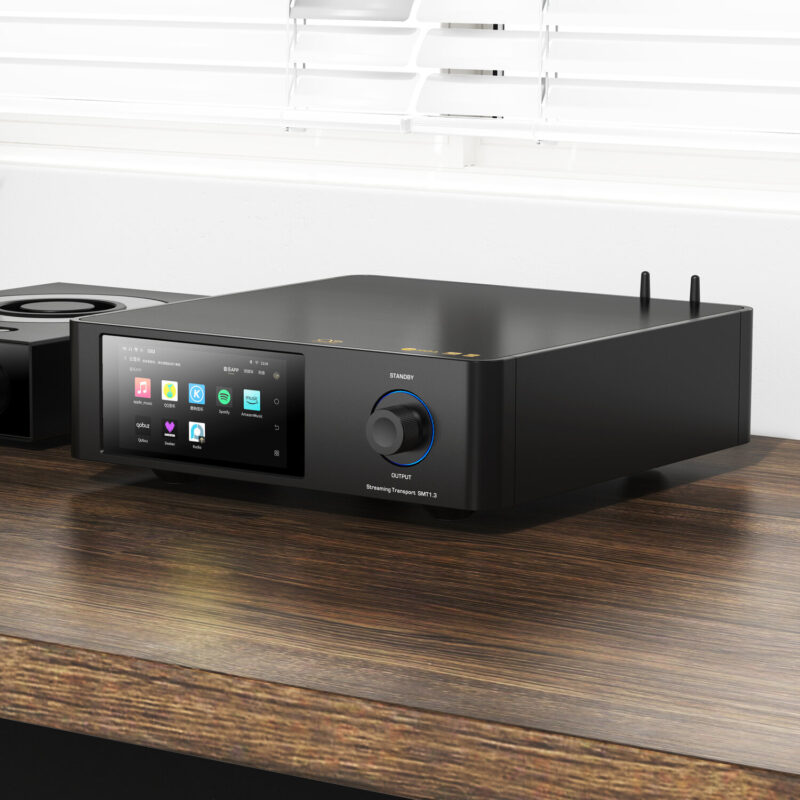
This year’s High End Society audio show—the last slated to be held in München, Germany, with future High End Society events moving to Vienna, Austria—was, quite appropriately for a bell ringer, the best-sounding I’ve attended. Typically, the glassed-in, flimsily partitioned-off listening “rooms” at Munich’s MOC Event Center tend toward bright, lean sonics. This year, for reasons that may be no more complicated than decades of past experience, most exhibits were rich and full in timbre, making for very good hi-fi that may not have been the last word in realism but was seldom less than enjoyably listenable.
Because virtually every exhibit room housed a statement loudspeaker driven by statement electronics and sources, there was no shortage of transducers above $50k. Consequently, I focused on newer introductions and established classics, but I’m just one guy and the show was enormous (and extremely well attended, making for packed rooms). My apologies in advance to those manufacturers I overlooked and, given the plethora of gear, for any mistakes I make in pricing, attribution, or nomenclature.
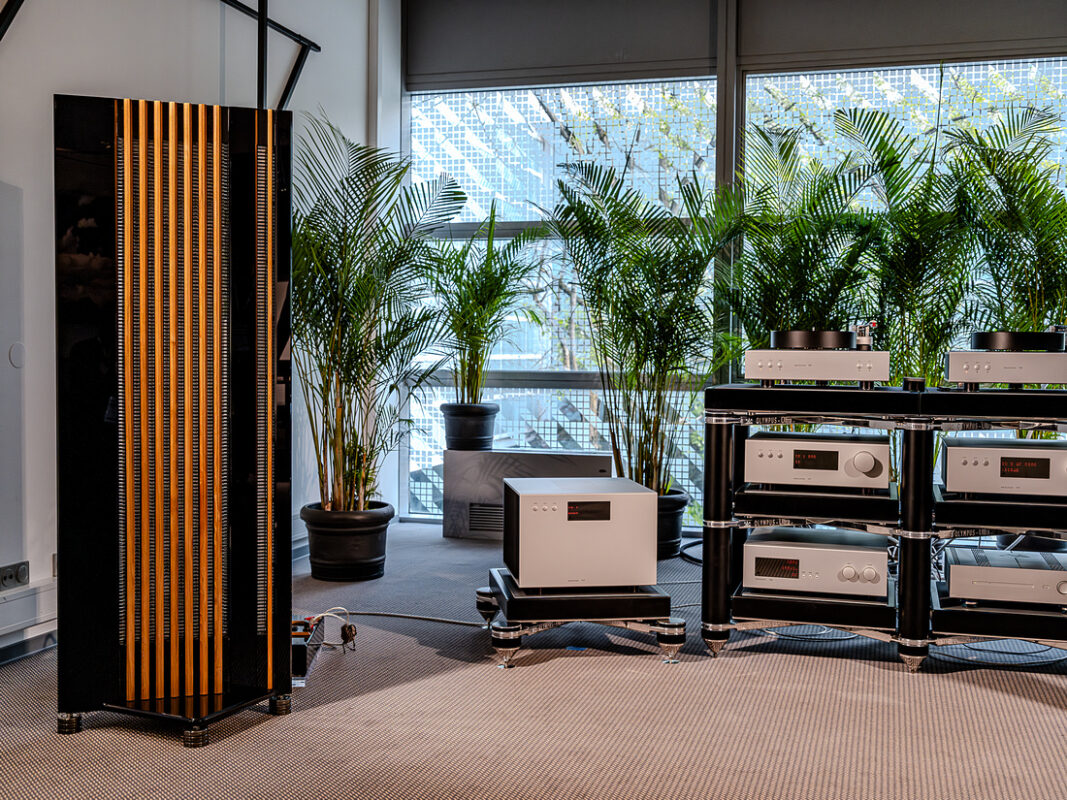
As fate would have it, the first room I visited showcased the three-way (320mm-wide woofer, 25mm-wide midrange/tweeter, 5mm-wide supertweeter) $200k AlsyVox Botticelli XX ribbon loudspeakers driven by Soulution’s new 717 amplifier, POY-winning 727 linestage preamplifier, and OPOY-winning 757 deemphasis unit, and sourced by Soulution’s extraordinary new 787 linear-tracking turntable/tonearm with moving platter and DS Audio Grand Master EX optical cartridge. The first cut I listened to, from Sheffield Lab’s The King James Version D2D LP, told the tale—phenomenal body, color, weight, and attack on all instruments with sensational realism on baritone sax! The Harry James ensemble sounded like an actual big band going all out in a club. The system was equally gorgeous and lifelike on Patricia Barber’s (digital) cover of “Black Magic Woman” and on Reference Recordings’ “Omphale’s Spinning Wheel.” If you’re going to start a show right, this was the way to do it.
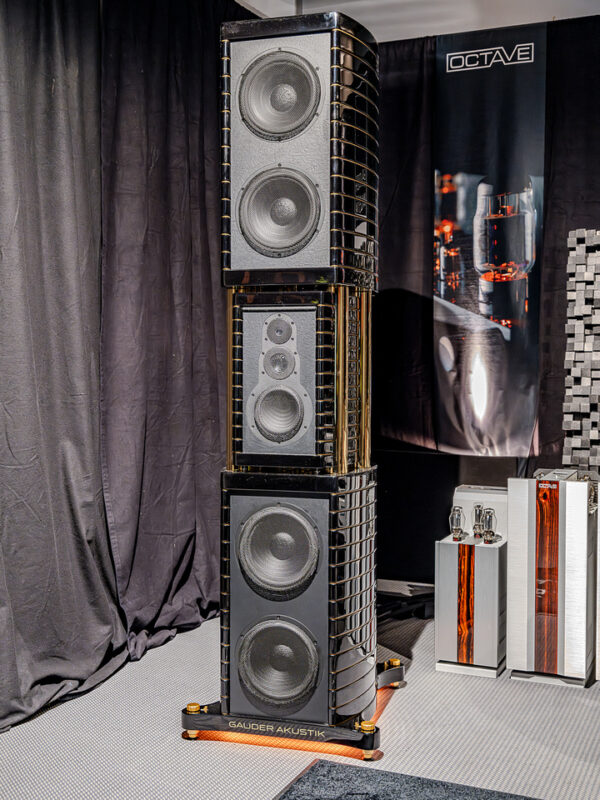
The €450k, four-way, 7-driver (4 Accuton woofers, Accuton lower-mid, and Accuton Diamond upper midrange and tweeter) Gauder Berlina RC 15 with 60dB/octave crossovers and built-in driver-time-alignment adjustments was being tri-amplified by Octave Audio tubes and sourced by dCS and Clearaudio. Norah Jones’ “My Dear Country” and BS&T’s “Spinning Wheel” sounded stunningly clean and clear— neutral and natural on voice, guitar, drum, cymbal, bass, and piano, with no trace of the analyticity that sometimes makes Gauders sound more like technical instruments than music reproducers. This was the best showing of a Gauder loudspeaker I’ve heard, and a sensational follow-up to the superb AlsyVox Botticellis.

In a nearby room, Florence’s Rosso Fiorentino showed its €65k 3.5-way, six-driver (two woofers, two midranges, one tweeter, and one super-tweeter) Pisa floorstander driven by Rosso electronics and sourced by Weiss and Bergmann with Ovation cables from Kubala Sosna. The sound was dark, rich, and listenable with exceptional recovery of depth and decay and very deep-going, naturally rounded bass. An excellent showing.
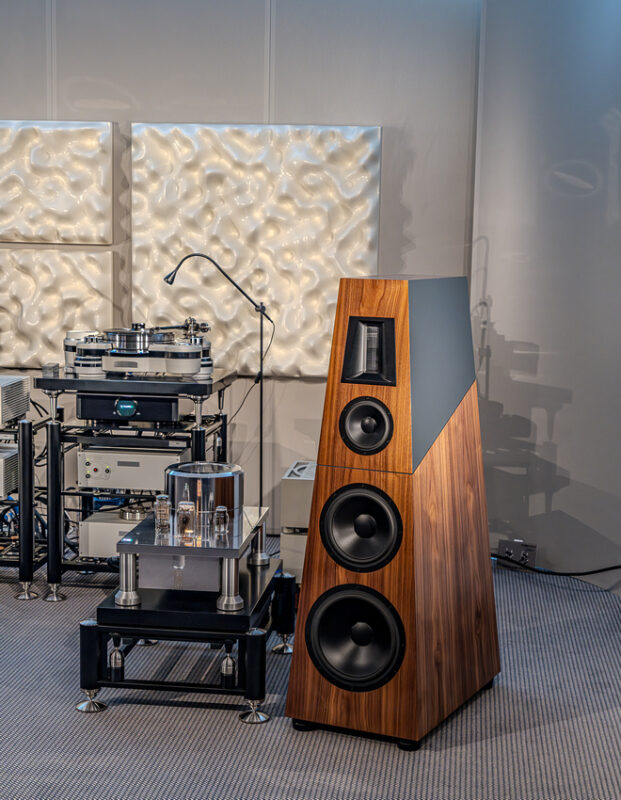
The €150–€180k Kawero Mina four-driver three-way floorstander in a two-part trapezoidal enclosure was being driven by Ypsilon tubes and sourced by an Air Force turntable. The Mina had a lively, neutral sound with fairly well-defined bass and very good attack on drums. An open, boxless presentation, slightly on the dry side.
Lansche Audio’s $180k Jubile three-way, 6-driver (with plasma tweeter), fully active floorstander was sourced by a KLAudio turntable with Reed SF optical cartridge and EQ unit (developed in cooperation with DS Audio). The sound was lush and bottom-up on strings. Bass instruments were a little tubby and underdamped in this room, but drum rolls and guitar strums were very nicely delineated. A good presentation save for the bottom-most octaves.
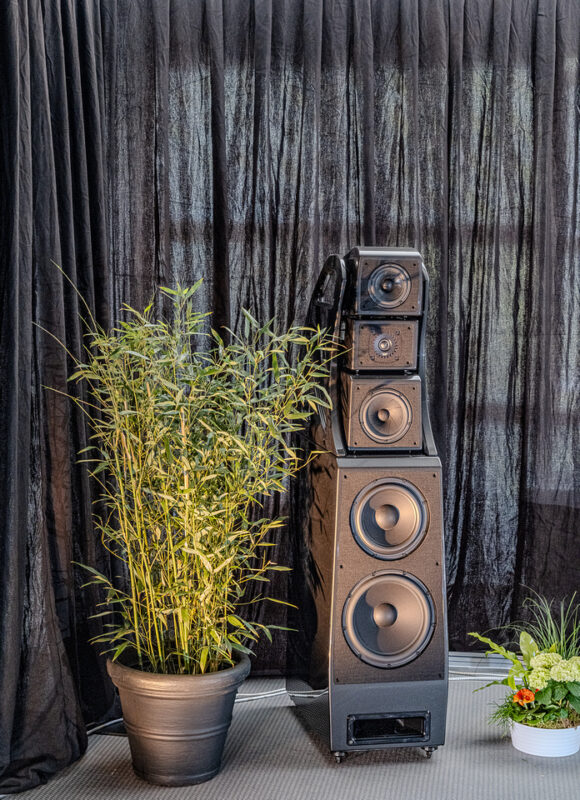
Up next was Wilson Audio’s $135–$151k five-driver, four-way Alexx V multi-ported floorstander driven by VTL Lohengrin monoblocks and sourced by a Kuzma table with Safir 9 arm and Lyra cartridge. The sound was downright superb on a Cécile McLorin Salvant vocal—sweet, dense timbre and vivid dynamics on voice, piano, drums, and bass, with particularly superb definition on the fiddle. This was a great old-fashioned sound, not boxless or neutral or analytically detailed but simply terrific in presence and immediacy thanks to its dynamic alacrity and gorgeous tone color. It is no wonder that David Wilson used VTLs as a reference. Here it was a hand-and-glove fit and equal in sonics to the best I’d thus far heard.
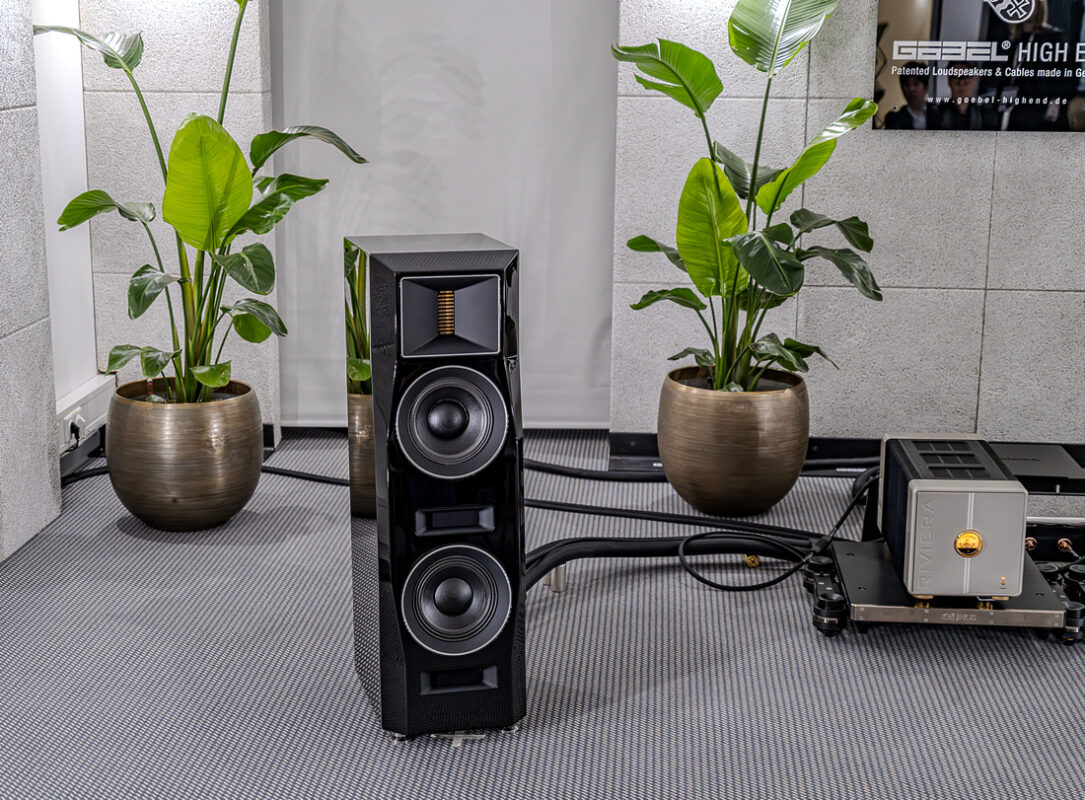
The smallish €65k two-and-a-half-way Goebel Divin Comtesse floorstander powered by Riviera Audio and sourced by Wadax and a Kronos table was surprisingly delicate sounding. No bombast or aggressiveness here, just a dark, lively, mellifluous presentation (on a percussion ensemble recording, no less). These smallish speakers played much bigger than their demure size would suggest—filling a moderately large space, with good stage depth, too. Very nicely done.
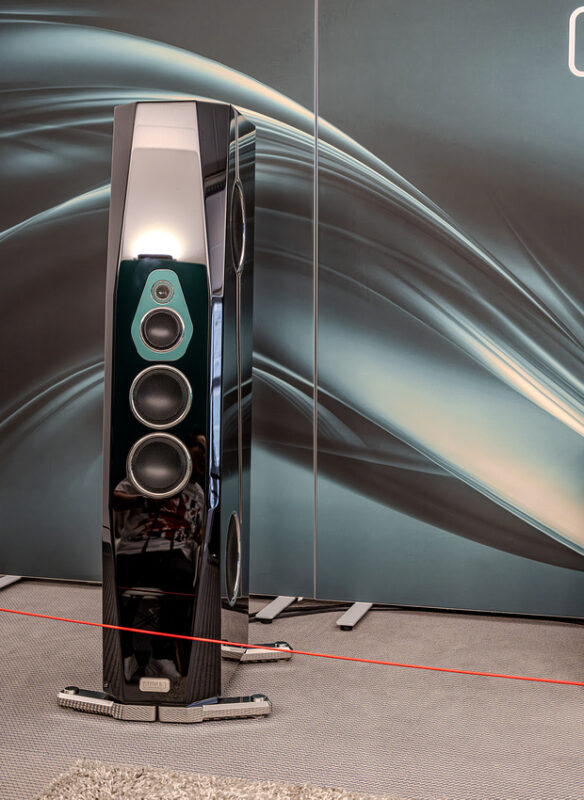
The $198k Tidal AP1 8-driver fully active loudspeaker had (once again) a rich beautiful bottom-up sound with slightly underdamped but quite listenable bass and excellent midrange and treble tone color on instrumentals, and a detailed but non-analytical presentation on strings, winds, and brass. A better than decent showing.
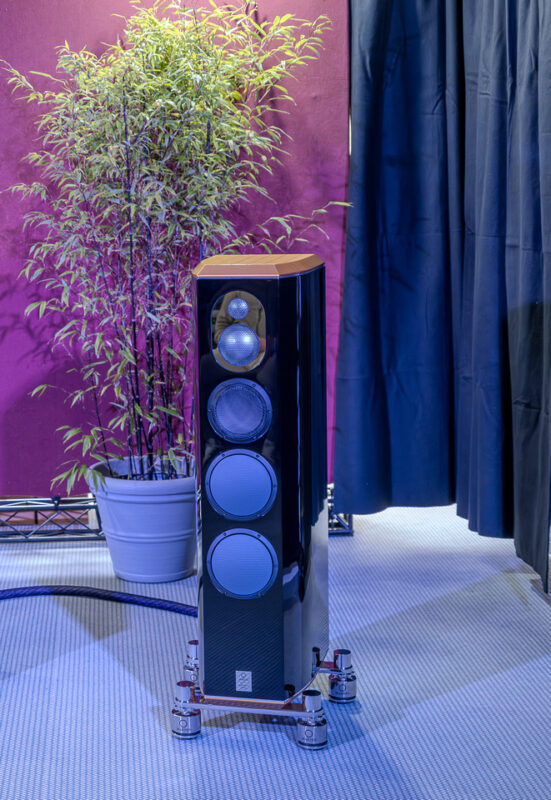
The seven-driver four-way $140k Mingus Septet Statement driven and sourced by Audia Flight and wired by Signal Projects was yet another lovely-sounding exhibit, prettier than it was realistic, perhaps, and a tad shouty on Billy Raffoul’s “Dark Four Door,” but otherwise beguilingly dense in color and dimensionality and heavy-hitting on drums and synth on Depeche Mode’s “Cover Me.” An enjoyable presentation.
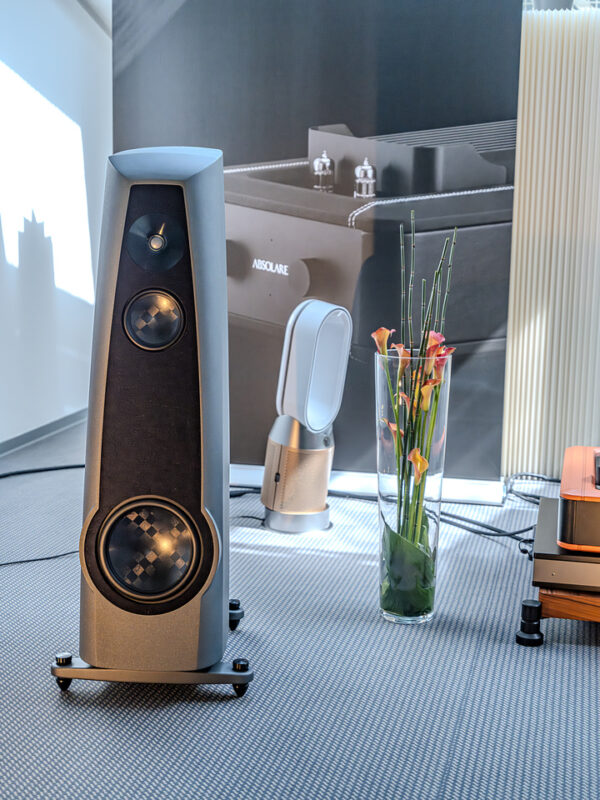
The 3-driver three-way $80k Rockport Lynx floorstander, which had impressed me at AXPONA, was again being driven by Absolare and sourced by Wadax in Munich. The Lynx threw a very large soundstage, which, unlike that of several of its competitors, was considerably freed up from its box, with gorgeous tone color on voice, chorus, and harpsichord continuo and terrific stage depth and choral imaging at the rear of the stage. A superior sound!
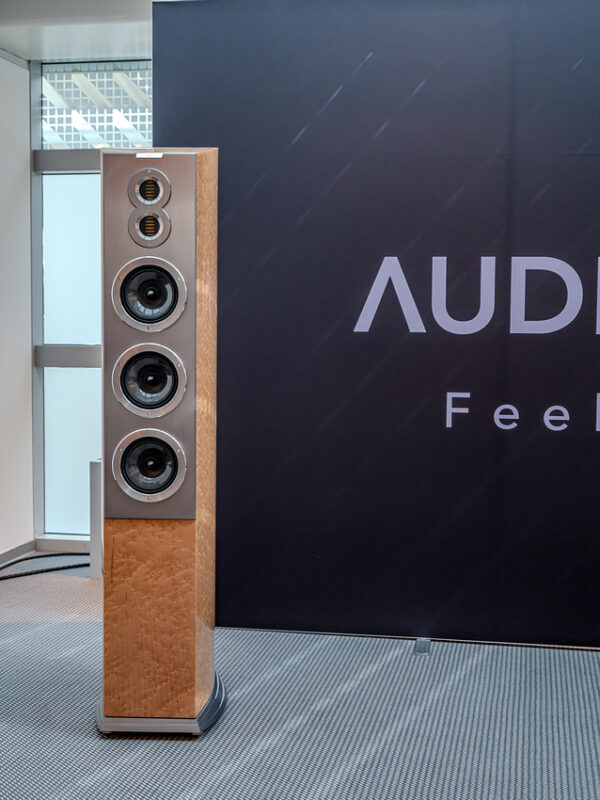
The €147.5k Audiovector R10 13-driver, multiway floorstander (with 8 five-inch woofers front and back grounded to the chassis and dual tweeter open to the rear) was driven by Soulution and sourced by Naim. Unfortunately, the speakers were being played very loudly, so vocals were a bit shouty and piercing on fortes. Bass, on the other hand, was very full and deep. This was a good presentation overall, but closer to the familiar MOC sonic profile of the past than other exhibits.
The newly updated €60k 4-driver three-way Peak Consult Diablo, powered by CAD and sourced by Reiki Audio, had a very natural reedy sound on sax and excellent piano tone on a jazz quintet recording. A little on the dark side overall with silvery transients that lent a touch of natural brightness to the presentation, it was quite satisfyingly listenable.
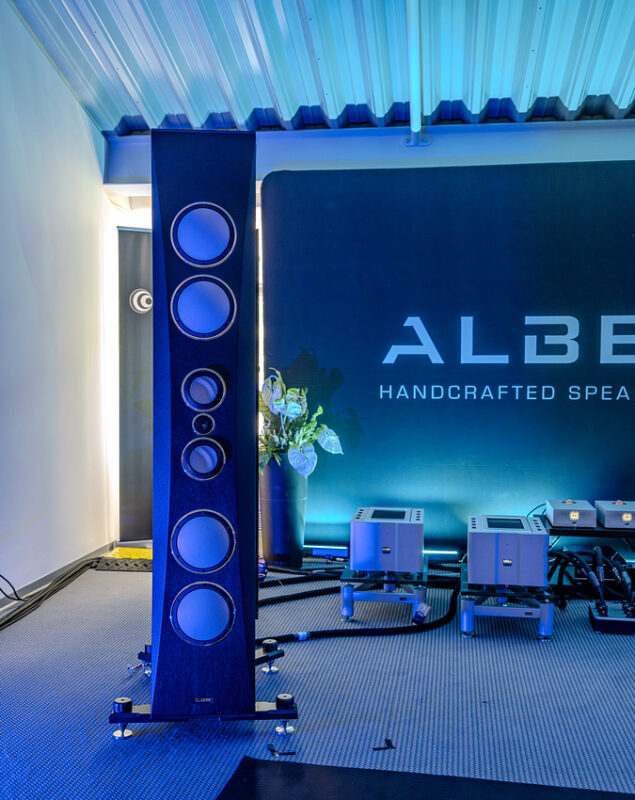
The €148k Albedo Altesia SGS seven-driver floorstander in a D’Appolito configuration was driven by Mytek, sourced by Soul Note, and wired by Faber. The Altesia was particularly nice on vocals, which had a free-floating forwardness with a touch of bright energy that gave voices increased separation and presence. It was also downright gorgeous on piano tone, save for deep bass notes, which were slightly underdamped. Though the Albedo was just a bit too large for the room it was in, it was otherwise quite impressive (as it was at AXPONA).
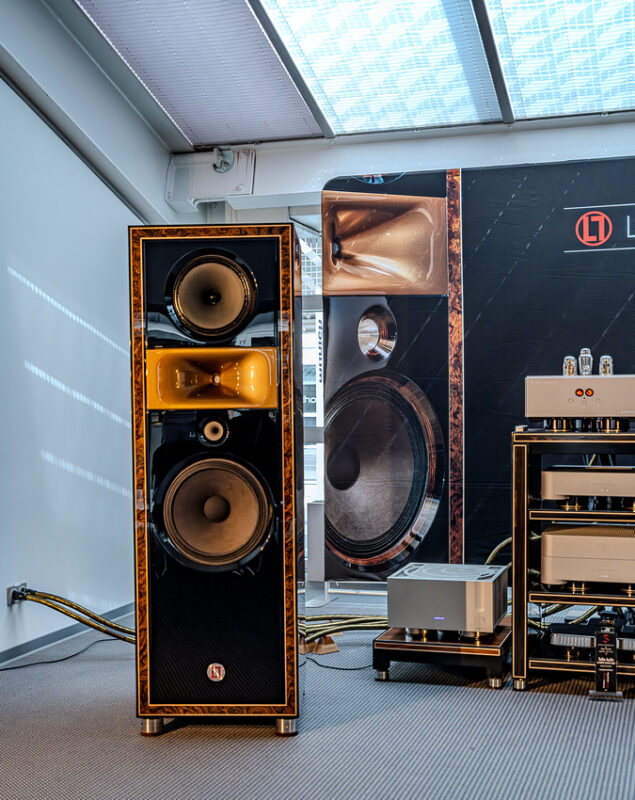
The huge, €225k, rectangular-horn-loaded Lorenzo LM1 four-driver four-way floorstander was powered by Ypsilon and sourced by Lampizator and SAT. “Omphale’s Spinning Wheel” was well done, albeit a little flattish in aspect, giving it a one-dimensional presentation. Dead Can Dance had the same flatness of aspect. Same for “St. James Infirmary,” although Satchmo’s voice was quite realistic, forward, and present with less sibilance than I’m used to on this cut.
€88k Kroma Atelier Callas 4-driver four-way driven by Engstrom and sourced by Wadax had, once again, a flattish presentation, without the front row immediacy of the Lorenzo but with tighter bass.
The $50k 3-way Wilson W/P 50thAnniversary with subs driven by VTL, sourced by dCS, and wired by Nordost was also a little on the thinner, brighter, flatter side, with the subs sticking out just a bit as separate sound sources. The WATT/Pups threw a wide stage with decent depth and good outside the box imaging but lacked dimensionality and lower midrange body on Teddy Swims’ “Simple Things.”
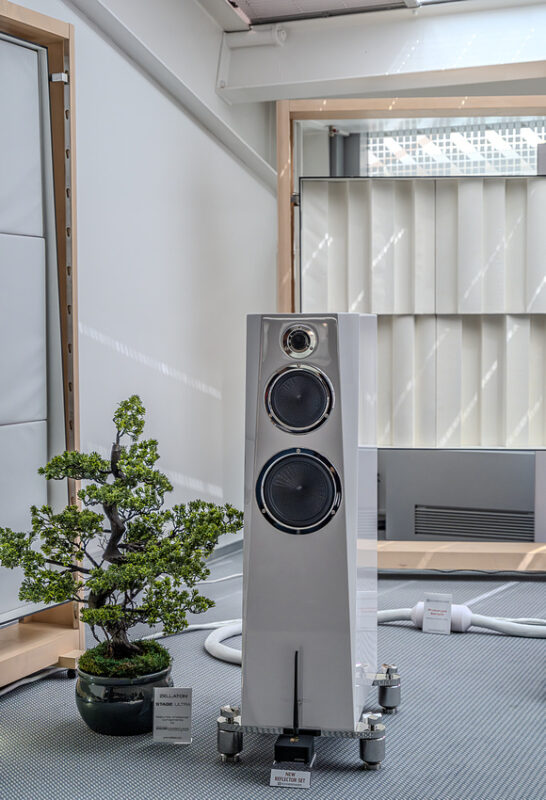
The €150k Zellaton Stage Ultra 3-driver three-way floorstander driven by TLA, sourced by SDS Audio Reed and Dohman turntables, and wired with Schnerzinger cable sounded extremely fast and hard-hitting on The Reddings’ The Awakening. These were not your grandpa’s Zellatons, which could blow a driver if you looked at them sternly. The new Zellaton cones were so much more dynamic than the older ones, without any perceivable losses in resolution or tonal naturalness, that they amounted to a very impressive sea change in the Zellaton sound. Michael Rabin’s “Thais” was also beautiful, Dean Martin superb on “I’m Confessing.” A best of show contender.

The $299k 8-driver YG Acoustics XV Studio l with separate sub tower driven and sourced by Vitus was very neutral, hard-hitting, and deep-going on an Infected Mushroom track. A little chillier in tone color and more tightly controlled than, say, the Zellatons but with a disappearing act that was at least as good as that of the Zells.
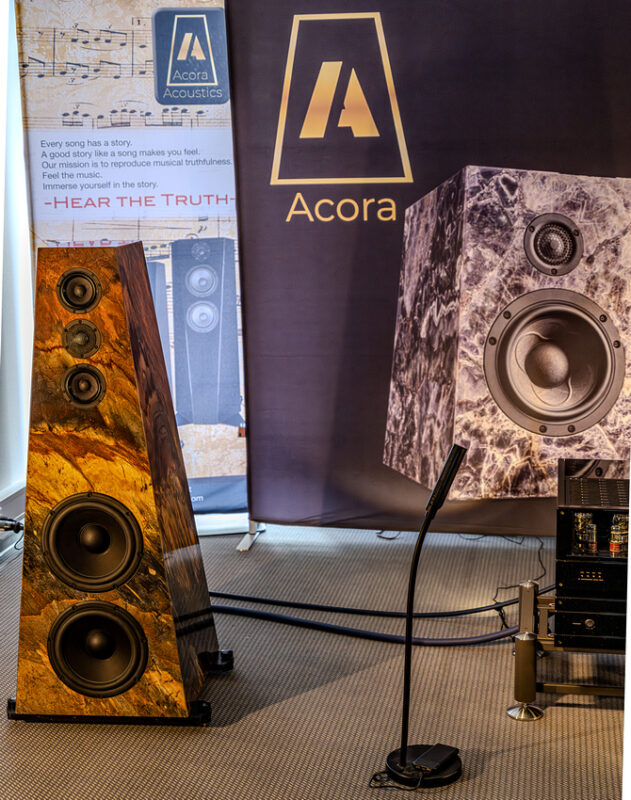
Acora Acoustics’ $218k, three-way, five-driver (one 1.25** beryllium dome tweeter, two 4.5** midranges, and two 12** woofers) VRC floorstander in a massive, solid-granite enclosure was here being driven by VAC and sourced by VPI. Gorgeous again on a choral recording with organ (Marianne Mellnäs Cantique de Noël), it was also terrific on Syd Lawrence’s D2D big band LP, combining just the right blend of color, speed, resolution, and body with terrific staging. Another BOS contender.
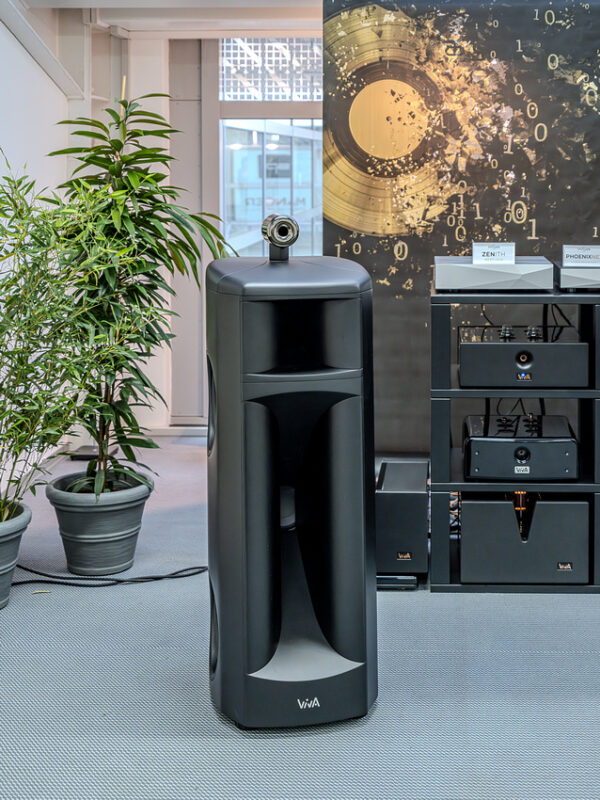
€100k Viva Verticale horn-loaded three-way driven and sourced by Viva electronics sounded dark, dense, and solid. There was no horn-like treble beaming on Allan Taylor’s “The Stranger,” perhaps a very small bit of cupped-hands coloration on voice but beautiful tone on guitar and deep-going bass that was just a little thick in texture but had nice growl and extension. A lively presentation seen through a glass darkly. This was a speaker I very much liked in spite of its limits.
$66k Estelon XB Diamond three-way 3-driver hourglass-shaped floorstander sounded simply lovely driven and sourced by MSB and wired by Ikigai. Offering a neutral sound of great delicacy and fine texture, the XB was slightly limited in bass extension but extremely natural in the midband—one of the more realistic exhibits on vocals. The diamond tweeter was just a little hot in the treble, but the presentation was otherwise entirely of a piece. An excellent showing.
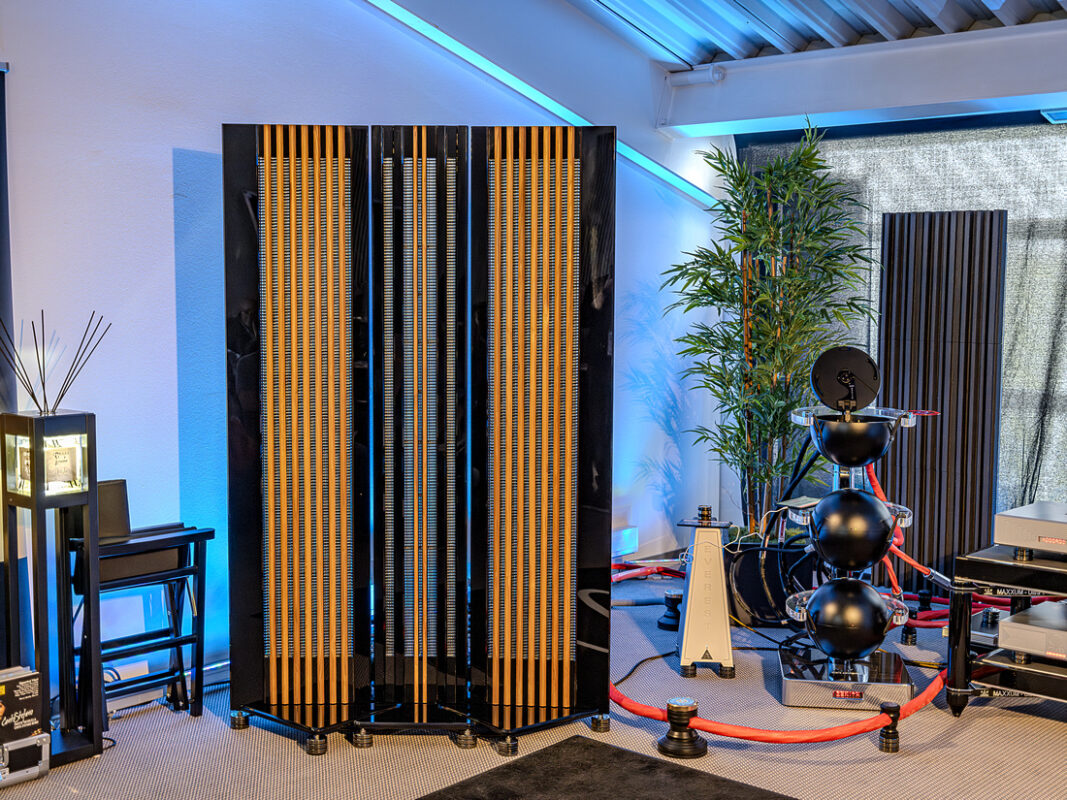
AlsyVox’s giant, three-panel, €486k flagship Michelangelo introduced at the show and driven and sourced by Omega Audio and Thuono Audio, offered up the best disappearing act yet, with electrifying transient response, neutral to warm tone color, and outstanding resolution on Ravel’s Rapsodie Espagnole. The Turtle Creek Chorale was reproduced with much the same sensational realism and ambient recovery that the Acora VRCs managed to generate on choral music at AXPONA in Chicago. The Michelangelos are the hardest-hitting planars I’ve ever heard with sensational attack, timbre, and decay, making them sound fabulously realistic on a solo drum recording—perhaps the best I’ve heard a drum kit reproduced. Though the room was a little small for these huge panels, they were nonetheless unquestionable BOS contenders.
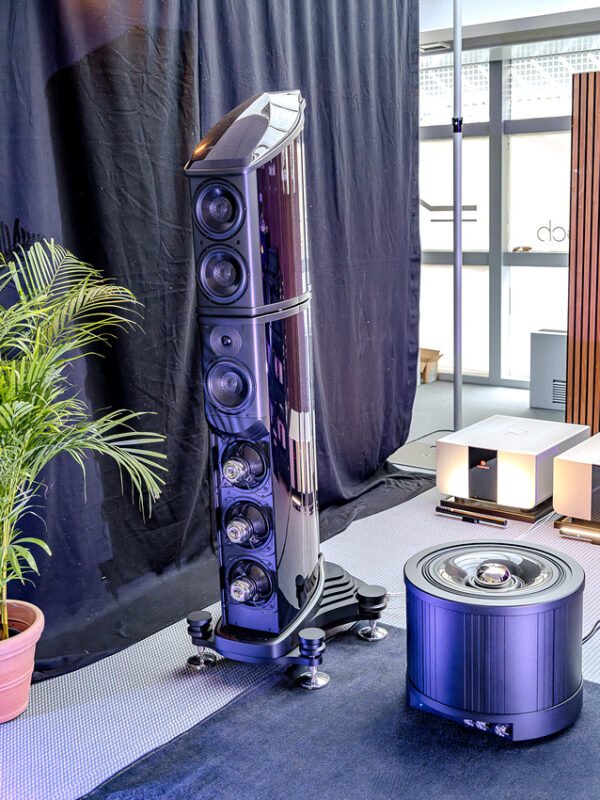
$150k Wilson Benesch Omnium with IGx infrasonic subs driven by Karan Acoustics, sourced by WB and APL, and wired by Crystal showed much better in Munich than they did in Chicago. Extremely neutral and natural on Vanessa Fernandez and Jacintha recordings, they were as realistic on voice as any other display I’d heard thus far. Almost completely free of enclosure and driver coloration, with an unusually seamless blend of subs—which were simply inaudible on their own—they sounded like a single system. Definitely BOS material.
The big, €249k, five-driver, D’Appolito-configured Gobel Divin Noblesse driven and sourced by Vitus was very damn good (to my surprise, given past setups) on Sarah Barailles, Tom Jones, and Leonard Cohen. Minus the slightest trace of hardness on Tom’s voice (which is on the recording), they were otherwise natural in color top to bottom, making for a very entertaining listen.
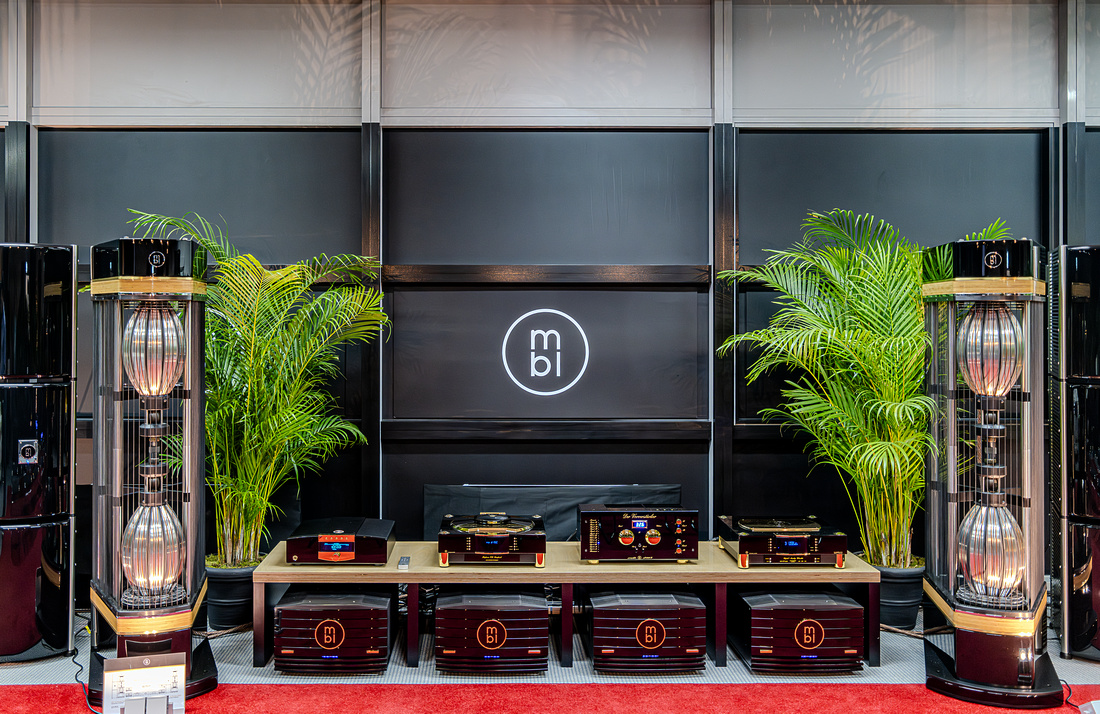
Well…this is gonna sound familiar, I’m afraid, but what am I supposed to do? I call them as I hear them, and the $500k MBL 101 X-Treme MKII sourced by MBL’s C41 streamer and driven by four MBL 9011 monoblocks were the best in the deep bass, the most boxlessly open in staging, the most delicate in the treble, the most three dimensional in imaging, the hardest-hittting in the midbass, and the most naturally rich in tone color top to bottom of any speaker in Munich. In short, they were Best of Show…again, Superb on synth, bass, and voice on VTT’s Vital Tech Tones. Nat Cole on “Route 66” sounded there, as did the muted trumpet, bass, and piano comping him. Charlie Hunter Quartet’s “Day Is Done” was marvelously realistic on drums, bass, congas, percussion, and vocal. Marc Cohn’s voice and those of The Blind Boys of Alabama were in the room with me on “One Safe Place.” The winner and still champion.
A second set of the $50k Wilson Audio W/P 50th Anniversary three-ways, driven this time by Constellation’s new Revelation 2 electronics and sourced by a dCS Rossini, sounded fuller-bodied than the earlier pair of W/Ps. While they didn’t generate the widest stage I heard, they resolved instrumental colors and textures very well, and their bass was denser in color than that of Constellations of the past. Dean Martin voice sounded superb on “I’m Confessing”; guitar, and piano were also very good. An impressive showing.
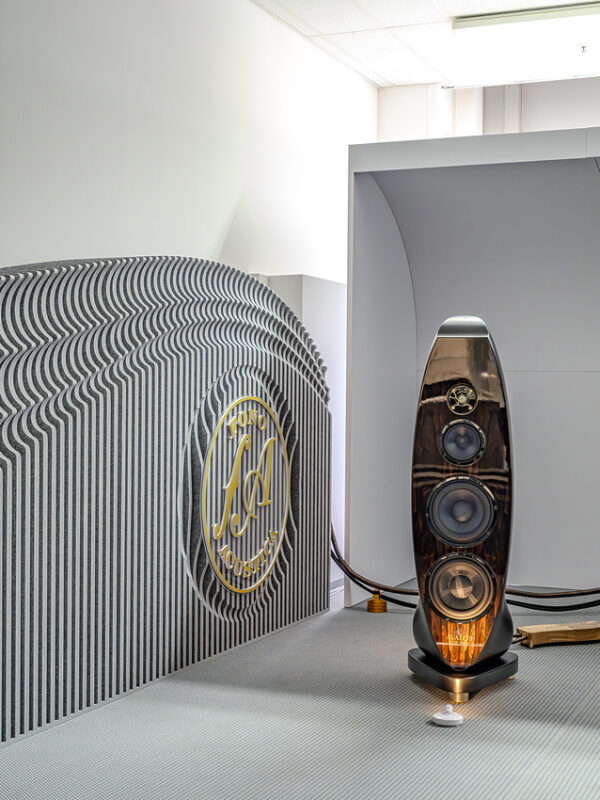
The 4-driver, three-way, €185k Avalos Sound Design Wave Series quasi-elliptical acrylic-and-Panzerholz floorstander powered and sourced by Goldmund sounded unusually dark, rich, dense, and beautiful in tone color—really quite lovely, without a trace of the analytical, just black velvet smoothness and beauty. On “Bye Bye Blackbird,” Patricia Barber’s voice, though a touch digitally flat in aspect (but that’s the recording), had a beguiling whispery breathiness, while her piano sounded in the room and Marc Johnson’s upright bass developed a nice bottom-octave growl. The speakers did a good disappearing act too, on Robbie Robertson’s “I Hear You Paint Houses.” A contender.
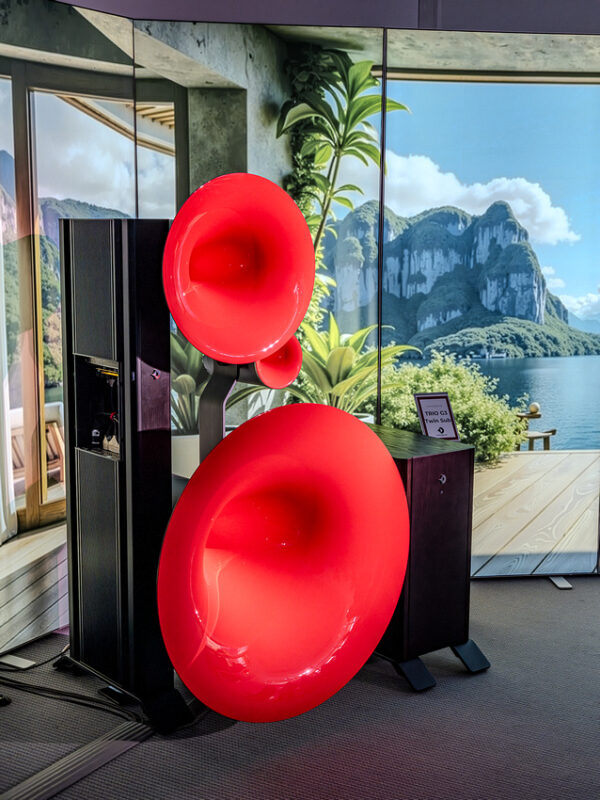
The €165k Avantgarde Trio G3 spherical horn three-way with twin, outboard, downward-firing, ported subs had superb color and texture on voice and guitar on a Tom Petty cut. The subs sounded a wee bit exposed here but were, nonetheless, terrifically powerful, deep-going, and detailed, making the low end of Hanne Boel’s “After Midnight” sound fabulous. This was one of Avantgarde’s best presentations at Munich—very close to MBL save in staging, imaging, and subwoofer blend. Another contender.
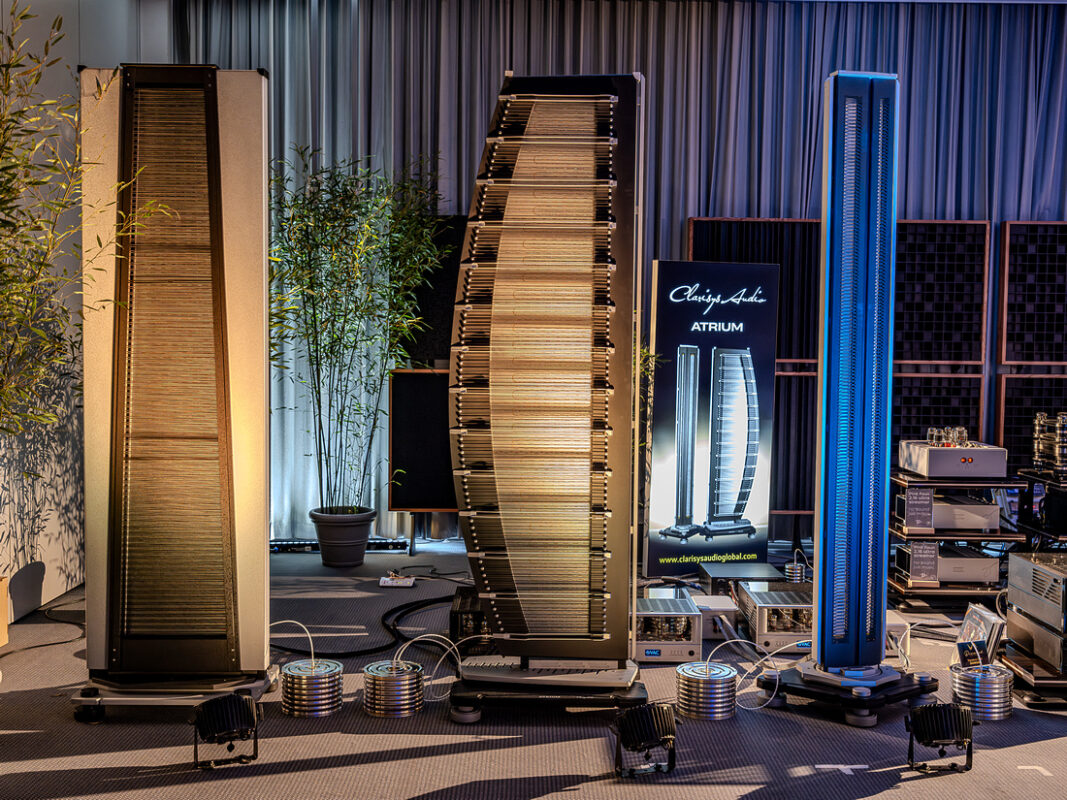
Clarisys debuted its statement $785k Atrium ribbon loudspeaker—a huge, 4-way, three-panel system comprising separate infrasonic woofer, midbass, and midrange/treble columns. All the 0.60mm-thick ribbons are bipolar, eliminating phase cancellation. Powered by VAC and sourced by Pink Faun and Kronos, the Atriums had an airy, open, neutral presentation. Though they were being played a little too loud for where I was sitting, making vocals just a little aggressive on fortes, they still sounded very much like MBLs in their free-floating boxless imaging on Annete Askvik’s “Liberty,” with terrific reedy sax, airy well-defined drums, good synth, and that extremely expansive stage without any enclosure coloration. They also did an outstanding job on piano with Jui-Sheng Li’s recording of Scriabin Preludes—producing as natural a keyboard sound as I’ve heard on digital (and correctly sized, for once). Another BOS contender.
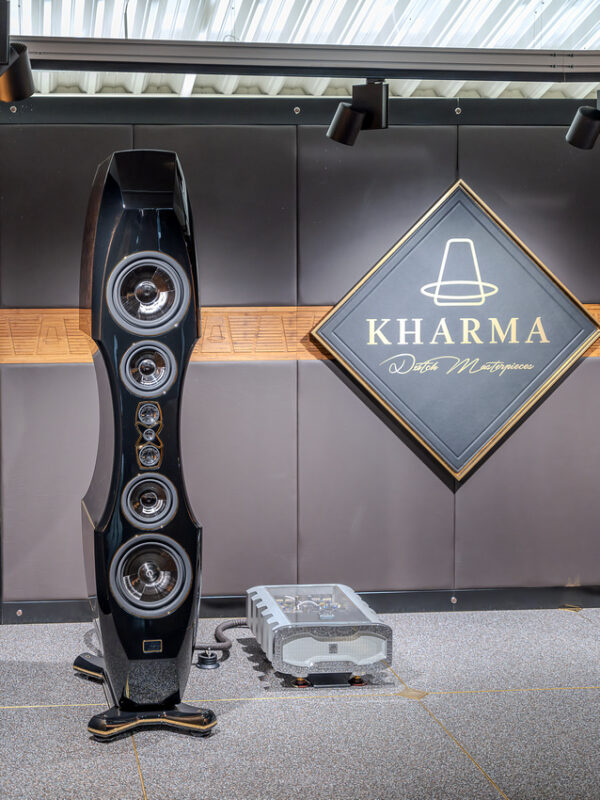
Always impressive, Kharma introduced its six-driver $650k Enigma Veyron 2VC floorstander with carbon-fiber “C” diaphragms and a new motor system. Driven by Kharma electronics and sourced by MSB and JC 4 Reference, they sounded outstandingly neutral and boxless (as usual) on everything I listened to. A wonderfully clear window on the music—and yet another contender.
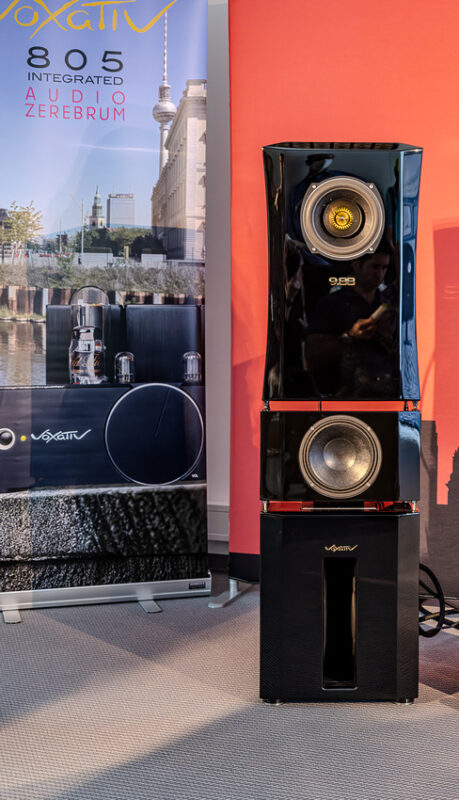
Voxativ showed its €75k 9.88 floorstander—essentially a modular augmented one-way with an AC-4nP wideband driver in the top cabinet, a 0.1 midrange in a separate cabinet beneath it, and Voxativ’s active RiPol bass in a third cabinet below the other two. Driven by Voxativ 845 amps and sourced by a Voxativ server, the 9.88s produced a rich, dark, lovely sound on The Castellows “Hurricane,” with single-driver coherence and sonic uniformity and virtually undetectable crossovers (yes, it has crossovers) at the lower midrange and bass. This is a greatly improved speaker with a unique of-a-piece beauty and naturalness to its sound—the best “affordable” (or, at least, quasi-affordable) offering in my component category.
Gershman showed its 3-driver three-way Black Swan, powered by TLA’s TSI 300 and sourced by a Pink Faun server. The Swans sounded quite lifelike on Jazz Sabbath’s “Paranoid”—powerful deep-reaching piano with smooth natural unaggressive treble, tuneful jaunty synth, realistic ” trombone, sax, electric and guitar, and potent drums and bass. A very nice showing!
The €380k Pallas by Aries Cerat is a huge, semi-active, 4-way horn-loaded speaker with what appears to be acrylic-coated wooden spherical horns and eight powered side-mounted wave-guided woofers. The Pallas generated very clear, clean sound, a bit on the bright side on piano crescendos but otherwise quite natural. I detected a little sonic discontinuity with the otherwise very well controlled and deep-reaching woofers, but not much. A big powerful sound that I rather liked.
The €140k SV Audio Menja is a twin-column multidriver floorstander with separate woofer tower and 13 total drivers. At Munich it was driven and sourced by Vitus and wired by Zen Sati. The Menja generated a huge deep soundstage with a neutral tonal balance and absolutely tremendous bass weight on drums and lower-pitched instruments. A shade dry and lean in timbre overall but sensationally powerful and open.
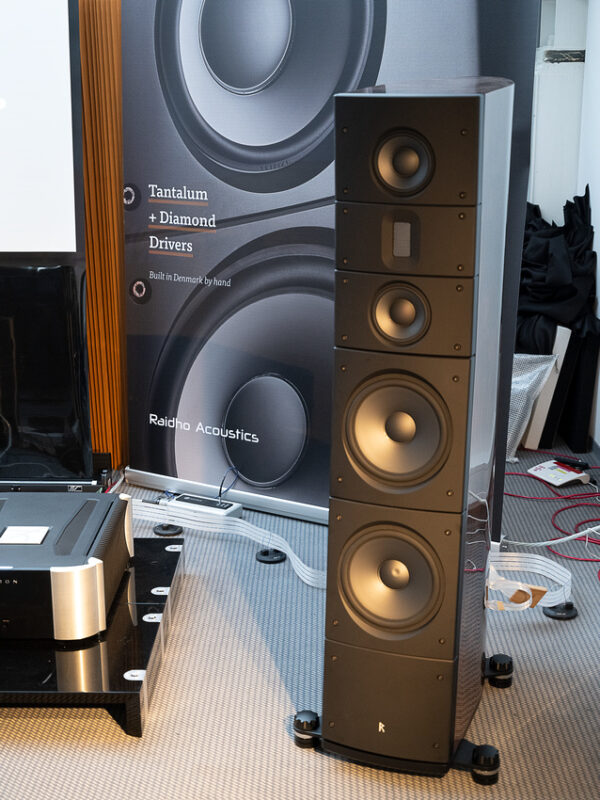
The €120k Raidho TD3.10 5-driver (with tantalum, ceramic, and diamond membranes plus single-ended ribbon tweeter), three-way floorstander was driven and sourced by Moon. The Raidho was quite attractively musical on “I Hear You Paint Houses” with truly lovely mids and treble. It was also wonderful on Tom Jones and Hans Theessink. The speaker had that rich dense Raidho sound with much improved linearity in the power range and bass. A gemutlich and eminently listenable loudspeaker that we should review.
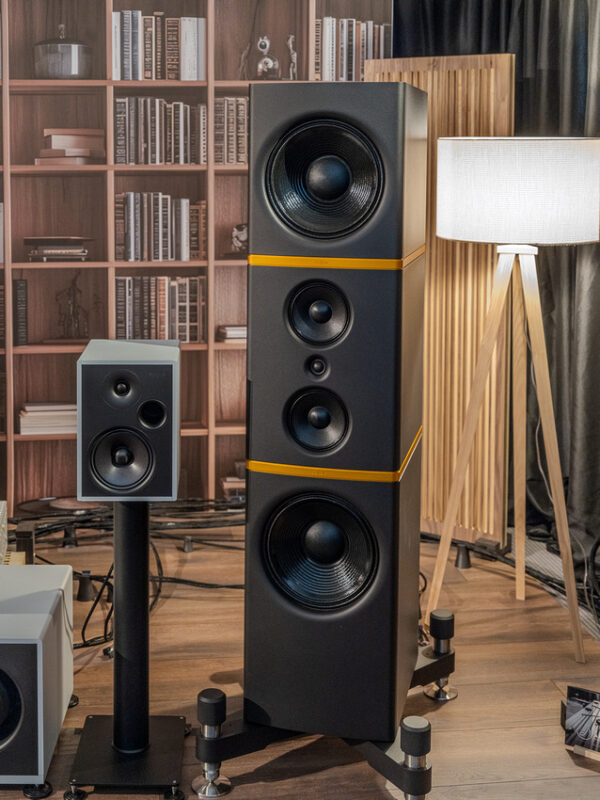
The $200k Stenheim Ultime 2SX driven by Boulder 1151, sourced by Master Fidelity pro DAC, and cabled by Hemingway was much more neutral with Boulder electronics than with the VTL bear Stenheim showed within Chicago, but not as gemütlich. A bit bright in the upper mids on piano, though the piano’s bass was superbly controlled, rich, and natural. Ultimately, I preferred the gorgeous VTL presentation in spite of the lightning power and sock of the more analytical Boulder.
The Wadax Studio Player and Pillium electronics sourced and powered the $74.5k four-driver, three-way Magico S5 2024. The sound was notably neutral with terrific depth of stage and a touch of reediness on female vocal. Though fairly realistic, the S5 sounded less warm and dense in color than the S3 2023. Arguably, it was less hi-fi than the S3, but it was also marginally more old school Magico and less musically enjoyable.
JV’s Best of High End Munich 2025
Best Sound of Show (cost notwithstanding): MBL 101 X-Treme MKII
Best Sound of Show (cost considered): Voxativ 9.88
Best Speaker Introduction: AlysVox Michelangelo, Clarisys Atrium, and Zellaton Stage Ultra (tie)
Most Coveted (for review): AlsyVox Botticelli, Voxativ 9.88, and Zellaton Stage Ultra (tie)
Tags: SHOW REPORT MUNICH HIGH-END

By Jonathan Valin
I’ve been a creative writer for most of life. Throughout the 80s and 90s, I wrote eleven novels and many stories—some of which were nominated for (and won) prizes, one of which was made into a not-very-good movie by Paramount, and all of which are still available hardbound and via download on Amazon. At the same time I taught creative writing at a couple of universities and worked brief stints in Hollywood. It looked as if teaching and writing more novels, stories, reviews, and scripts was going to be my life. Then HP called me up out of the blue, and everything changed. I’ve told this story several times, but it’s worth repeating because the second half of my life hinged on it. I’d been an audiophile since I was in my mid-teens, and did all the things a young audiophile did back then, buying what I could afford (mainly on the used market), hanging with audiophile friends almost exclusively, and poring over J. Gordon Holt’s Stereophile and Harry Pearson’s Absolute Sound. Come the early 90s, I took a year and a half off from writing my next novel and, music lover that I was, researched and wrote a book (now out of print) about my favorite classical records on the RCA label. Somehow Harry found out about that book (The RCA Bible), got my phone number (which was unlisted, so to this day I don’t know how he unearthed it), and called. Since I’d been reading him since I was a kid, I was shocked. “I feel like I’m talking to God,” I told him. “No,” said he, in that deep rumbling voice of his, “God is talking to you.” I laughed, of course. But in a way it worked out to be true, since from almost that moment forward I’ve devoted my life to writing about audio and music—first for Harry at TAS, then for Fi (the magazine I founded alongside Wayne Garcia), and in the new millennium at TAS again, when HP hired me back after Fi folded. It’s been an odd and, for the most part, serendipitous career, in which things have simply come my way, like Harry’s phone call, without me planning for them. For better and worse I’ve just gone with them on instinct and my talent to spin words, which is as close to being musical as I come.
More articles from this editorRead Next From Show
See all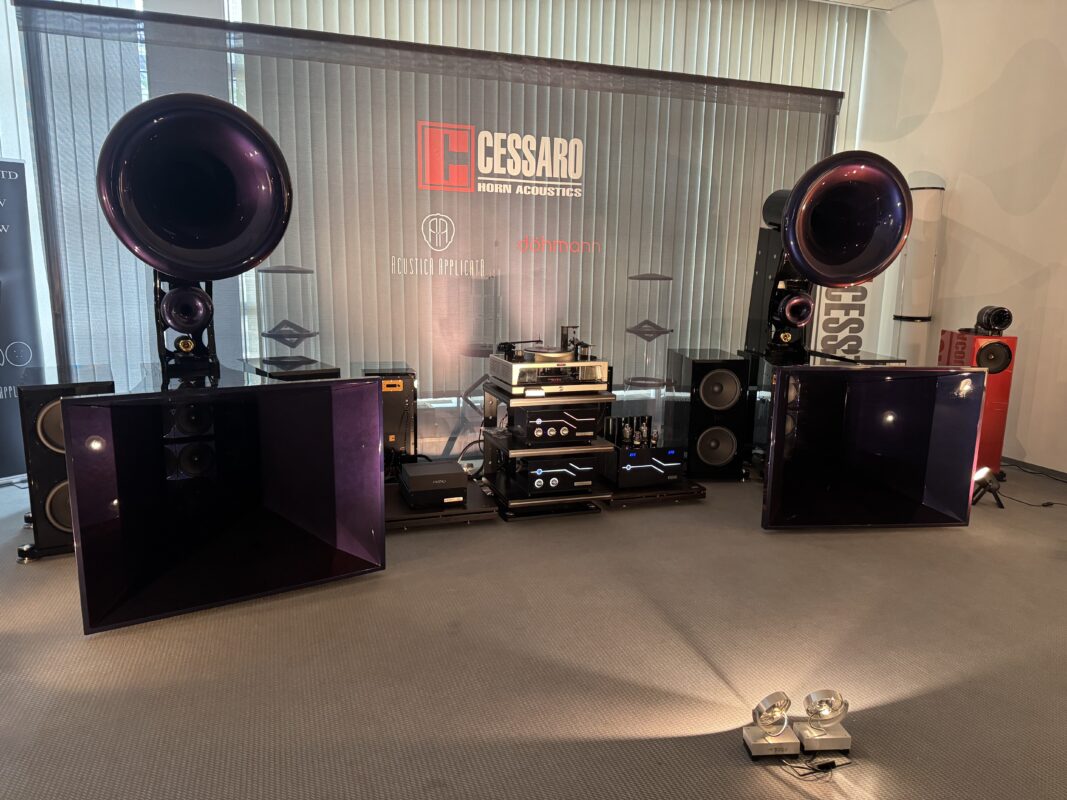
High End Munich 2025: Highlights
- May 30, 2025
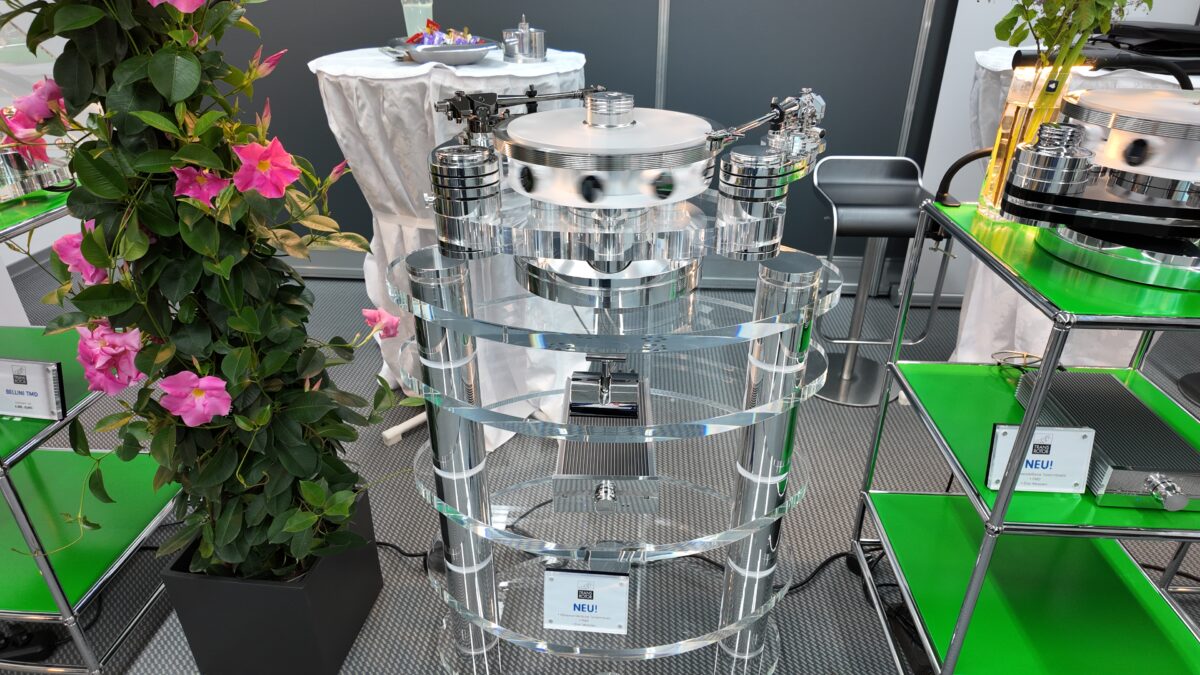
High End Munich 2025: Michael Fremer on Analog
- May 30, 2025
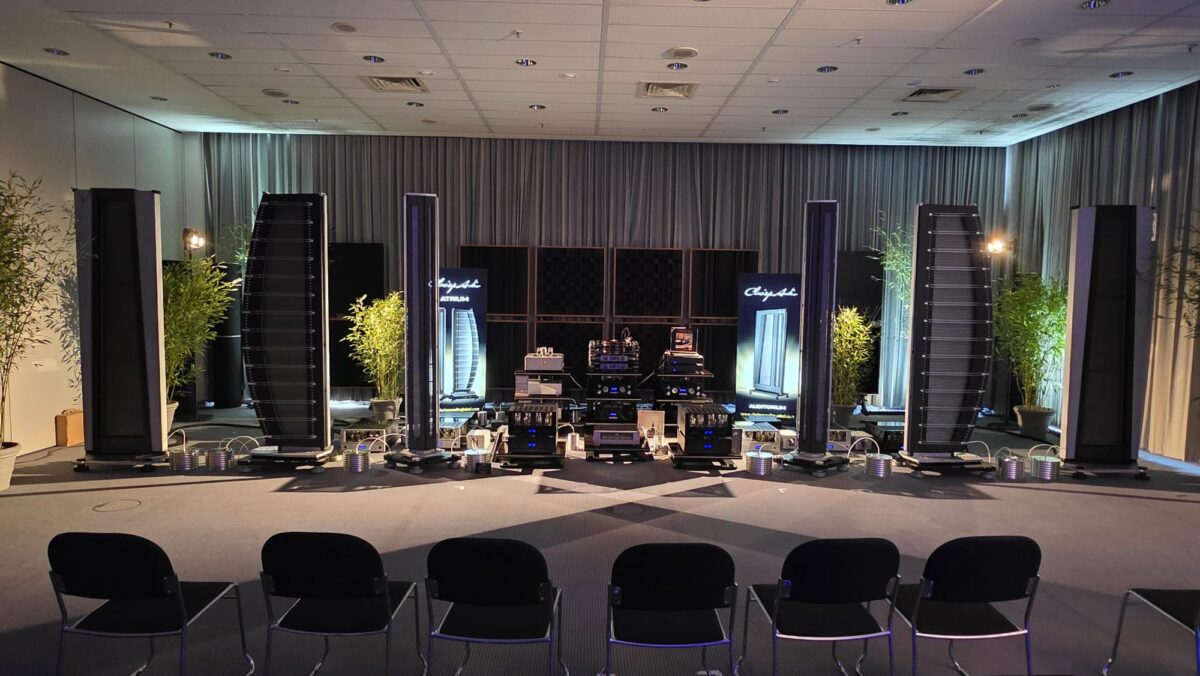
High End Munich 2025: New Loudspeakers under $50,000
- May 30, 2025










